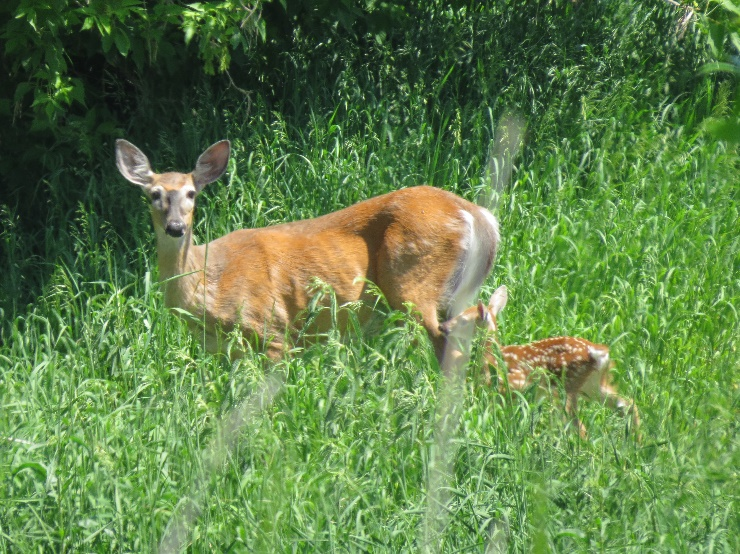To prevent the introduction and spread of chronic wasting disease (CWD) in deer and other cervids in Québec, the government plans to modify the regulation respecting the possession and sale of an animal. The proposed modifications are subject to publication in the Gazette officielle du Québec and the public can submit their comments until July 13.
The only time CWD has been found in Québec was in 2018 when it was discovered in a domestic herd of red deer on a farm in Grenville-sur-la-Rouge. The cases of CWD led to an extensive cull of the domestic herd and of wild deer in the area to prevent the spread of CWD.
The proposed regulatory changes aim to improve the control of CWD, particularly if cases are detected in Québec. Many of the changes will only apply on the outskirts of where a case was detected. In addition, if measures are put in place, they will be lifted if the disease has been absent for more than six years. These modifications mainly affect hunters, deer owners, meat preparation workshops (slaughterhouses, butchers, etc.) and rendering workshops.
The regulatory modifications concern anatomical parts at risk and aim to eliminate the trade of certain anatomical parts of deer, movement restrictions on certain anatomical parts of white-tailed deer, moose and caribou, eliminate the sale of urine or any other fluid, excretion or secretion of a deer, and prohibit the possession of embryos, semen, ova and velvet antlers.
Deer covered by the regulatory changes
The regulatory changes mainly target deer which present a higher risk of being infected with CWD. Those include White-tailed deer and moose that were harvested within 45 kilometres of where a case of CWD was detected in a cervid kept in captivity or within 100 kilometres of where a case was detected in the natural environment or kept in captivity in a place of custody that meets one of the following criteria:
- One deer was infected with CWD in a location in the last 20 years
- A deer suspected of carrying CWD
- Cervids that died in the last six years were not analyzed for CWD
- A case of CWD has been detected in a deer kept in captivity less than 45 kilometres from the place of keeping, or in a deer in the wild less than 100 kilometres away, during the last six years
- A deer from a facility that met one of the above criteria was introduced into the holding area within the last six years.
Anyone interested in making comments on the proposed changes must submit them in writing before July 13, 2024. All information to this effect can be found in the Gazette officielle du Québec at https://www.legisquebec.gouv.qc.ca/fr/document/rc/C-61.1,%20r.%2023/.
Impacts on current hunting conditions
The proposed regulatory changes will end restrictions affecting the movement of certain anatomical parts of deer slaughtered within the 45-kilometre radius around the farm affected by CWD in 2018. Whole deer carcasses could again leave this radius to be taken to a butcher. Compulsory sampling of deer slaughtered in this same radius will end. The obligation for hunters to report to a designated station to register white-tailed deer killed in the radius will also be discontinued.


